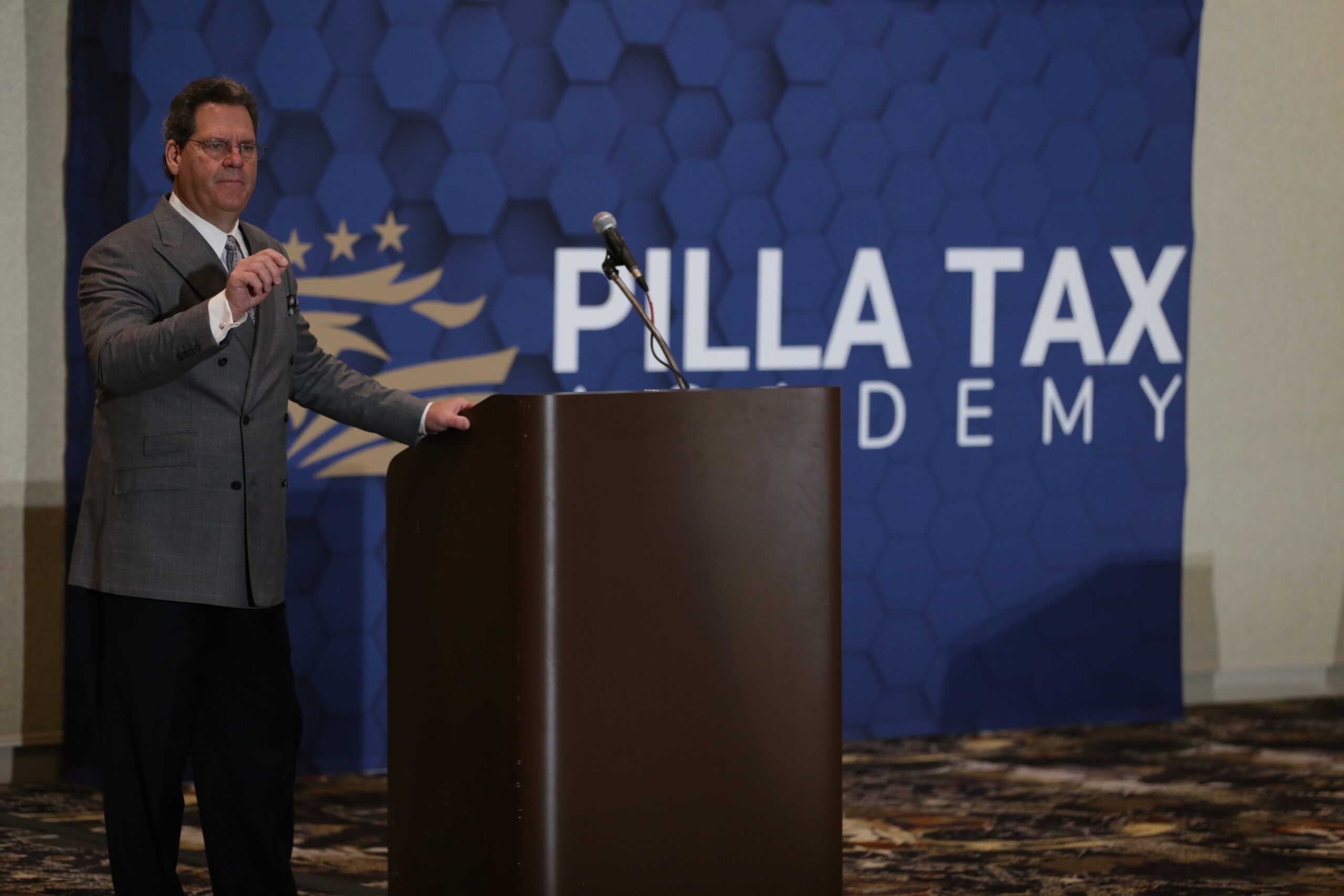HOW NOT TO RECONSTRUCT RECORDS
Don’t Follow This Formula for Failure
Lost or missing tax records are a regular and widespread problem. People lose records for a myriad of reasons, including fire, flood, hurricane, etc. My current client had her storage shed broken into. The thugs ransacked the shed, destroyed personal photos and memorabilia, and made off with numerous boxes. Among those boxes were records related to the purchase and remodeling of her home. Now that the home has been sold, it’s time to prove cost basis. This will have to be done by reconstructing, as best we can, evidence to show purchase price and costs of remodeling.
When it comes to deductions (or in my case, proving basis), the burden of proof is on the taxpayer. Even when one loses records through no fault of his own, the burden remains on the taxpayer. That means lost or missing records must be somehow reconstructed in order to carry the burden of proof. See my discussion of records reconstruction in How to Win Your Tax Audit, chapter 6.
The reconstruction of records has long been permitted by law. In fact, certain Tax Court decisions suggest that one even has a duty to reconstruct lost record because he retains the burden of proof. Under Cohan v. Commissioner, 39 F.2d 540, 543-44 (2nd Cir. 1930), when a deduction cannot be fully substantiated due to lost records, the Court has the authority to approximate the allowable amount. However, the Court must have some factual basis for its estimate. Without some foundation of evidence to support the reconstructed amount, the Court is under no obligation to allow a deduction in any amount. I discuss the Cohan rule (and related Tax Court decisions) at length at pages 62-65 of How to Win Your Tax Audit.
In the recent Tax Court case of Eze v. Commissioner, T.C. Memo. 2022-83 (August 2022), we get a pretty good lesson on how NOT to reconstruct records. Eze was a self-employed consultant selling tech products and services. He traveled using his car to visit medical offices and provide products and services to existing and potential customers. During the two years subject to the audit, Eze grossed about $115,000 and $143,000, respectively, from this business. The income was reported on Schedule C (C1), along with business deductions, which gave him reported net income from that business of about $80,000 and $100,000, respectively.
Eze filed a second Schedule C (C2) for his “handyman business.” He did construction and residential rehab projects for individual customers. The reported gross receipts for that business were $21,000 and $29,000 respectively. His claimed expenses vastly exceeded his income. The claimed expenses created a loss of $63,000 and $81,000, respectively.
The losses reported on C2 almost completely offset the income from C1. For 2015, he reported taxable income of $3,314, and for 2016 he reported zero taxable income and claimed a refund of $714. Not surprisingly, the IRS audited those returns. The agent disallowed all Schedule C expenses for both businesses and mailed a Notice of Deficiency to Eze, who filed a Petition in the U.S. Tax Court challenging the disallowances.
In the Tax Court trial, Eze presented what he considered to be reconstructed records to support his deductions. The Court found Eze’s records to be lacking in credibility. Let me address the key problems with Eze’s reconstructions.
- Mileage logs. Eze kept no contemporaneous records of his travel for either business. The logs were reconstructed for the audit several years later. And while that alone is not a problem, he couldn’t explain how he remembered any of the details that went into the reconstructions after so many years. Also, he exactly duplicated a number of travel entries from one year to the next. For example, in several instances, he claimed to have traveled to exactly the same city, on exactly the same day of the year, to see exactly the same client, over both years. Worse, he couldn’t identify a single client who worked at any of the addresses he recorded in the reconstructed logs. In over 100 separate instances, the log entry merely said “visit client.” Moreover, the logs were remarkably inconsistent when it came to distances traveled. Multiple trips to certain cities varied considerably in the distance he claimed to have traveled. Trips to cities far from home were said to have incurred fewer miles than trips to cities closer to home. Finally, he reported driving no personal miles at all, which is impossible. Considering all of the above (and more), the Court rejected Eze’s reconstructed mileage logs.
- Materials expenses. Schedule C2 reported “other” expenses, chiefly consisting of materials purchased, in the amount of nearly $68,000 and $84,000, for the respective years. These expenses were alleged to be construction materials and tools. Eze had a number of receipts from various home center box stores, but they were not his receipts. He did not explain how he came into possession of the receipts, but he acknowledged that the purchases were made by “another person.” His only explanation for who the other person might have been was his wife and “maybe somebody else.” Each receipt was for a cash purchase, often more than $5,000. He couldn’t explain to the Court why he spent nearly $175,000 in materials over two years to complete just $50,000 worth of work during the same time. Even worse, he couldn’t explain the purpose of $21,000 of the tools and machines that were shown on some of the receipts.
- Cell phone expenses. Eze claimed a total of about $3,000 of cell phone expenses over the two audit years. He provided no bills, invoices or contracts to show any cell phone service expenses. In fact, he said he received no invoices from the cell provider, but “knew” that he owed fees each month. He said he went to the vendor’s office, paid in cash and obtained a receipt. However, there were physical problems with the receipts. The amounts listed as “payments” did not align with the other numerical entries in the same column, and they were printed in a different font from all other numbers on the receipts. The Court concluded that the documents were photoshopped, with fictitious numbers inserted as payments.
Both Eze’s evidence and testimony regarding his expenses lacked credibility. The explanation of his construction activities was so vague and implausible that the Court questioned whether he had a business at all. But even if he did, he completely failed to provide the Court with the factual basis for any allowable estimate of business expenses under the Cohan rule.
Eze v. Commissioner provides the formula for what not to do when it comes to reconstructing records. How to Win Your Tax Audit provides the formula for what to do. Follow that outline and you will win when it comes to lost or missing records.
PTT subscribers get this article and more when they download their January 2023 issue of Pilla Talks Taxes.
Recontructing Records
ARTICLES
also found in January 2023 Issue
WILL THE IRS LOSE ITS $80 BILLION APPROPRIATION?
HOW NOT TO RECONSTRUCT RECORDS
THE STATUS OF THE IRS’s PROCESSING BACKLOG
TAX COURT ADDRESSES § 6751 PENALTIES
AMERICAN BUSINESS OWNERS LOSE A GREAT FRIEND
LOOKING TO STAY CURRENT ON THE LATEST TAX CHANGES?
Dan Pilla' monthly newsletter, Pilla Talks Taxes, features news stories and developments in federal taxes that effect your pocket book. Each information packed issue shows you how to use little known strategies to cut your taxes, protect yourself from the IRS, exercise important taxpayers' rights and keeps you up to date on the latest trends in Washington on the important subjects of taxes and your rights. You can't afford to miss a single issue!
10 issues per year. $99.00 per yr Order Now!
Click here for more information on
PTT articles and subscription options.
An email address is required to receive this newsletter.
--------------------------
LOOKING FOR A SPECIFIC TOPIC?
Check out our
INDEX of PILLA TALKS TAXES articles


